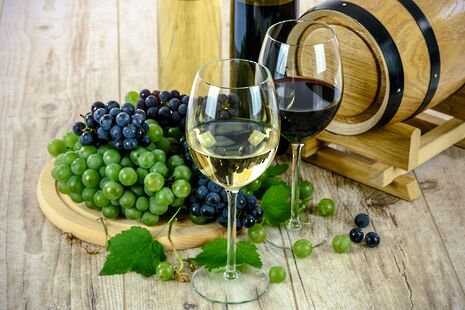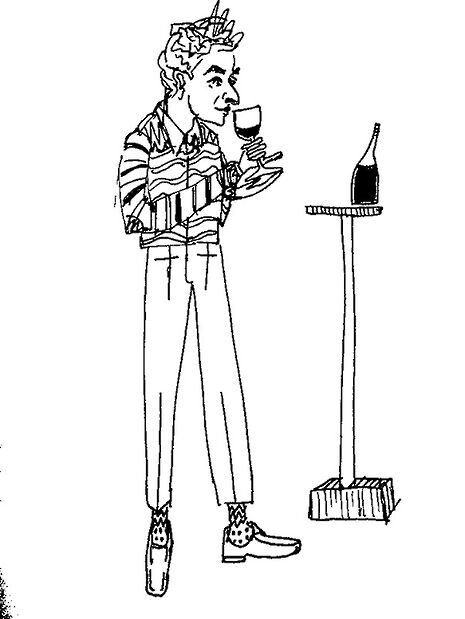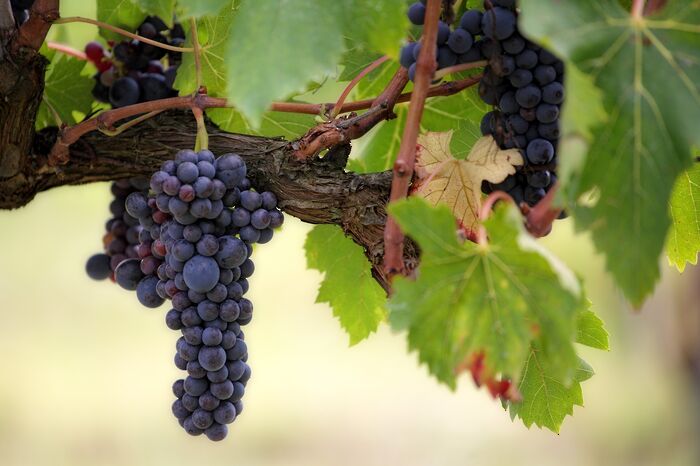What we talk about when we talk about wine
Edward Pinnegar explains wine terms so that you too can act in the know

There are plenty of things about modernity that would, for most of human history, have seemed totally unthinkable. Electric light. FaceTime. The idea that someone as fatuous as Theresa May could have moved into 10 Downing Street due to anything except a series of wrong turnings by a removals van.
And the ability to wander into a shop and buy good wine for the equivalent of a fiver.
Terrifyingly banal? No, really. Besides a very brief period in ancient Greece, until the twentieth century, most wine had to be drunk as young as possible… and (whisper it) even then a lot of it was frankly disgusting.
"There is no proud, adjectival tradition in talking about wine in a way which is opaque"
After the war came a series of minor victories in wine-making – earthy denouements in battles against frost, rot, yeast and vinegar – that gradually made genuinely enjoyable wine available to hundreds of millions of people.
So never mind the ‘Information Age’ (sounds a bit Windows XP) or the ‘Anthropocene’, which by contrast sounds more like an apocalyptic athlete’s foot cream; ours is the Age of Good Plonk. Yet the explosion in quality and quantity that accompanied it changed the way that people actually talk about wine in ways that nobody could have predicted.
Look back a century or two and you will find no record of wine discussed in the often absurdly florid terms that some do today, precisely because the sheer quantity of bilge meant that wine was usually deemed either ‘passable’ or not. Indeed, plenty of Victorian merchants spent good time coming up with inventive schemes to douse their wines with brandy and port in an attempt to mask their odiousness (incidentally a great – and joyously sacrilegious – way to spritz up a red that’s been open too long).
How things have changed. Take a moment, for instance, to assess whether the following is a review of a bottle of wine, or an extract from a Farrow & Ball wallpaper catalogue:
‘Deep purple colour. Aromas of rich dark currants, nectarine skins, gushing blackberry, but lots of fragrant tobacco, rich soil, white flowers, smashed minerals and metal … laden with mocha, loamy soil, charred herbs, pencil shavings, roasted hazelnut … Has been matured for 24 months in 2 year old 55% Tronçais and 45% Vosges oak. 95 points.’
Mercifully, it’s a parody by two Australians who call themselves The Wine Wankers (‘all about the wine… without the wankery’) – but it’s plausible. It might be the antipodean climate or those mysterious forces that make the flush go down the loo the other way, but there is a culture of simplicity in Australian wine writing that we could generally do much to learn from.
There can be few things more satisfying than finding a word that really captures your feelings, but flavours are often more personal and more subjective than emotions. There is no proud, adjectival tradition in talking about wine in a way which is opaque.
So, while it’s easy enough to Google obscure wine words, I thought I’d include a list of a few to help navigate all this contrived vocab; to allow you to judge the people who use them; and to have a sense of what on earth they’re on about.
- Bouquet: ‘bucket’ for snobs. A useful word referring to the different smells you pick up if you close your eyes and have a really good shnuffle.
- Corked: a snob’s excuse to send the wine back at a restaurant or what people call wine contaminated with ‘cork taint’, a chemical called TCA (trichloroanisole) that makes it taste curiously like wet dogs.
- Herbaceous: a gardener with excellent social skills or a term for wine (often young reds) which tastes or smells a bit like cut grass or vegetables.
- Magnum: evocative of the Peep Show episode in which Jez accidentally spends £45 on a bottle of Barolo, a well-regarded Italian red: ‘obviously it’s not really delicious like hot chocolate or coke, but for wine… brilliant’. An ice cream or a double-sized bottle (1.5 litres).
- Nose: usually located a little above the mouth of the person speaking. Use of this word indicates that they should consider closing it in the near future.
- Oxidised: if it’s reacted with air and gone a bit vinegary. Don’t even hesitate: if you’re eating salad, shock your company and apply it liberally as a garnish
- Yeast: in wine, the wonderful and charitable stuff which ferments it from grape juice. Anywhere else, consult your GP.
What to drink this week
Autréau-Roualet Brut NV
Champagne (France). Cambridge Wine Merchants, £16.47 (with 10% student discount).
It’s Valentine’s weekend. You decide you want to turn up the heat. What to serve? This – and it’ll knock your socks off, and perhaps a few other undergarments, for the price. Fun facts: it’s made entirely from black grapes (you wouldn’t know it) – and the Autréau family have been making wine on the estate since 1670. Sainsbury’s has good vegan alternatives at similar prices.
If it were human it’d be: the apple of your eye
Leaping Hound Chenin Blanc/Viognier 2018
Western Cape (South Africa), white. Cambridge Wine Merchants, £6.05 (with 10% student discount).
A sunny-side-up, best-of-both-worlds, Liberal Democrat sort of wine (replete with yellow screwtop). A relatively unusual – and pretty fabulous – blend of grapes means you can serve it with just about anything; you might pick up some lemon, some honey and maybe a bit of spice. But don’t over-chill it – or it might have a ‘Coalition moment’ and start doing things you didn’t expect.
If it were human it’d be: Nick Clegg circa 2009
Beyerskloof Synergy 2017
Western Cape (South Africa), red. Sainsbury’s, £7.00 (on offer; save £1.00). Vegan.

Thankfully the contents of this bottle have worked hard to make up for the brutish horror of its name. Another classic if perhaps predictable winter red, whose richness will fill your mouth with easy pleasure and your heart with joy.
If it were human it’d be: a portly, middle-aged banker… last seen on the 18:06 from Basingstoke
 News / Cambridge bus strikes continue into new year16 January 2026
News / Cambridge bus strikes continue into new year16 January 2026 News / Uni members slam ‘totalitarian’ recommendation to stop vet course 15 January 2026
News / Uni members slam ‘totalitarian’ recommendation to stop vet course 15 January 2026 Science / Why smart students keep failing to quit smoking15 January 2026
Science / Why smart students keep failing to quit smoking15 January 2026 Interviews / The Cambridge Cupid: what’s the secret to a great date?14 January 2026
Interviews / The Cambridge Cupid: what’s the secret to a great date?14 January 2026 News / Cambridge local elections to go ahead in May despite local government reorganisation16 January 2026
News / Cambridge local elections to go ahead in May despite local government reorganisation16 January 2026









